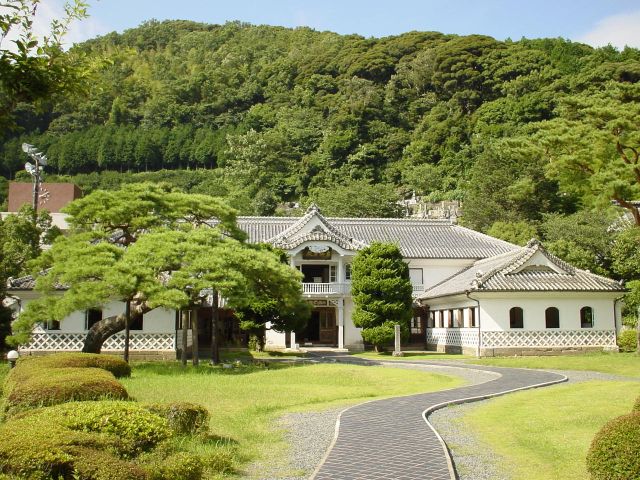
It was an elementary school built in 1880 (Meiji 13) and is an important cultural property of the country. It is the oldest surviving school building in Izu. It is an eclectic of Japanese and Western styles, including a balcony in the style of a chalky shrine-temple building that makes use of the Namako wall. The inside is a local hall, which recreates the state of classes from the past. On the second floor, there is "Chihazuru", a masterpiece by Irie Chōhachi, which is so elaborately painted that it seems to pop out of its forehead. It takes 30 minutes.
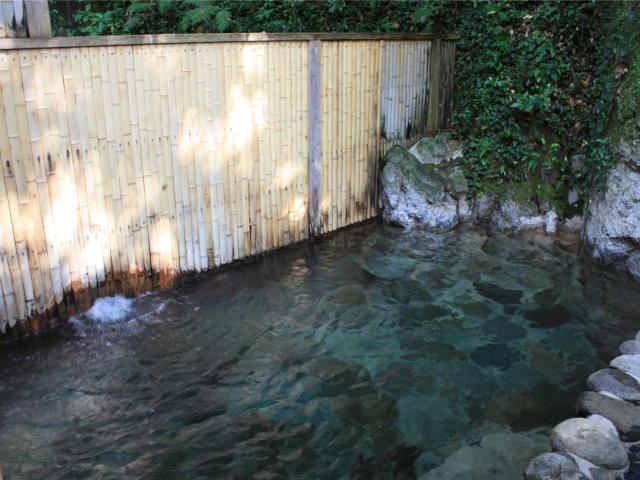
As you step back along the Naga River from Osawa Onsen, you can see buildings with lanterns bearing names on the opposite bank of a small bridge. The hot water that spills out from the middle of a bath in an open-air bath made using natural rocky areas is a charcoal-acid spring that is rare in Izu and is called "makeup hot water", which has a beautiful skin effect. Soap can be used, but I would like to recommend that you do not use it in order to realize the good quality of the fountain. It was a mixed bath with about half a partition in the middle of a bath, but it became a single-sex bath with a complete delimitation.
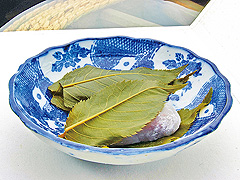
Matsuzaki, whose Sakuraba boasts the highest shipping volume in Japan; and the store, which was founded in 1873 (Meiji 6), is also a specialty of cherry cake wrapped in salted cherry leaves (5 yen, 648 yen). Let's taste the cherry leaves with it.
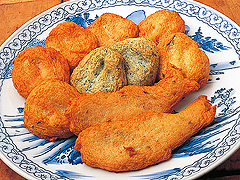
A store specializing in satsumaki made from fresh fish and vegetables as raw materials and using the old-fashioned formula. In addition to the flat-ten set 1450 yen, one kinpira 115 yen and one curry dumpling 100 yen, the "fish" with squid, ginger and green onions on the surimi costs 135 yen per piece. The taste and reputation that is light and tireless.
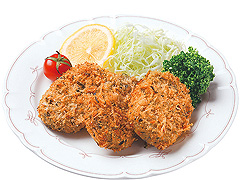
One croquettes of Kawanori devised by the third-generation shopkeeper 160 yen became a hot topic as a new specialty. A potato croquette made by filling Kawasaki nori in clothes and accessories, which was completed after a year of trial and error. Try it without adding a sauce.
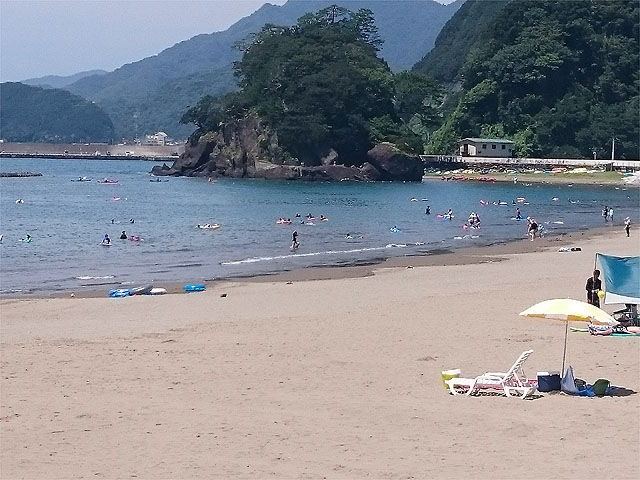
It is a shallow beach with a total length of 500m, and the waves are quiet. It is popular with parents and children on the widest beach in the town.
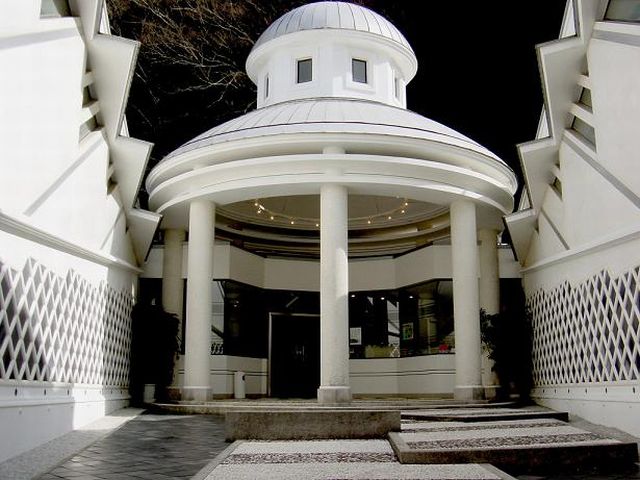
The museum, which displays representative works by Rie Chohachi. In the 12th year of Culture (1815), Nagahachi, who was born in Matsuzaki, went out to Edo for training, where he left a masterpiece of stucco mortar painting [shikuikotee]. Stucco mortar painting is a painting that is painted in such a way as to enliven the stucco that is applied to the wall, finished while being colored, and painted in a three-dimensional manner. All of the works are very fine, and when you look at them with a magnifying glass, you can see the beauty. The unique building, which combines modern contemporary architecture with namako walls and ancient plastering techniques, is also interesting. It takes 40 minutes.
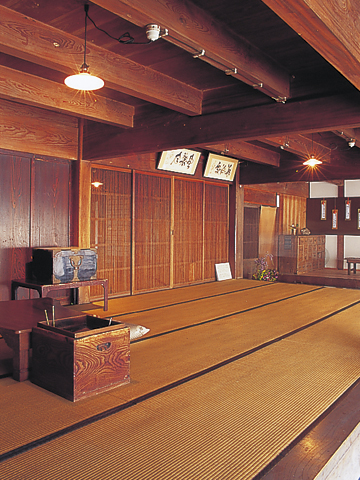
Namako Wall mansion built as a kimono merchant house in 1910. The two-story main house and the two-building storehouse are preserved and public, and inside, you can rest in a room of about 20 tatami mats. There are free foot baths in the back park, so take a break on the way to walk.
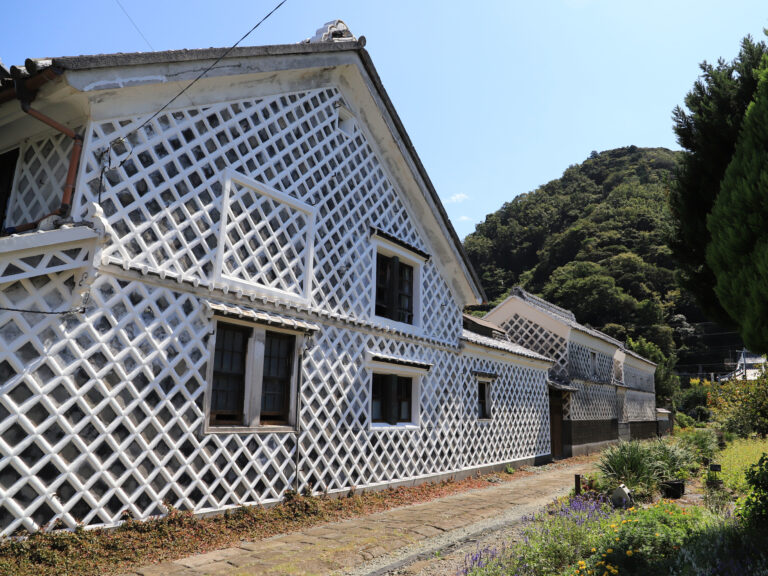
The Namako wall is lined with square flat tiles on the wall, and the seams are raised in a kamaboko shape with white plaster. It was popular in the Edo period as a fire prevention and moisture-proof building, and can be seen in various places of Izu, but there are many left in Matsuzaki. Among them, the alley beside the Kondo family, which was once a medicine restaurant, is called Namako Wall Street, and a fine wall from the late Edo period has been preserved.
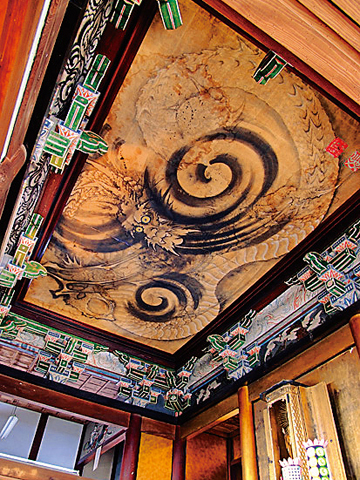
The Bodhi-ji temple of Irie Chōhachi, a plasterer who was described as a master of stucco [whitewater] finery, is located at Jōji Temple. Its main hall has become the Changpachi Memorial Hall, and about 20 works remain, including "Happo Gura [Nira] Minoryu", which is painted on the ceiling, which is famous for being a masterpiece of Nagahachi. The precinct houses the tomb and bust of Changpachi and a memorial. It takes 20 minutes. It is designated as Shizuoka Prefecture Designated Tangible Cultural Property.











